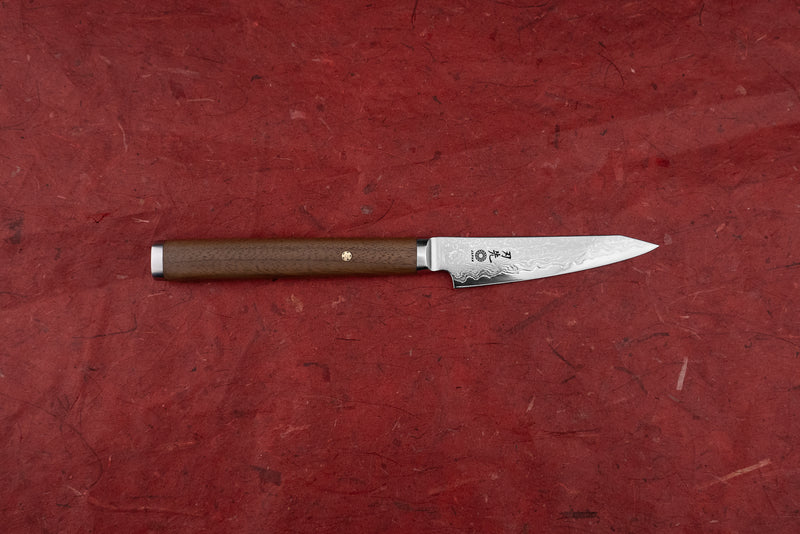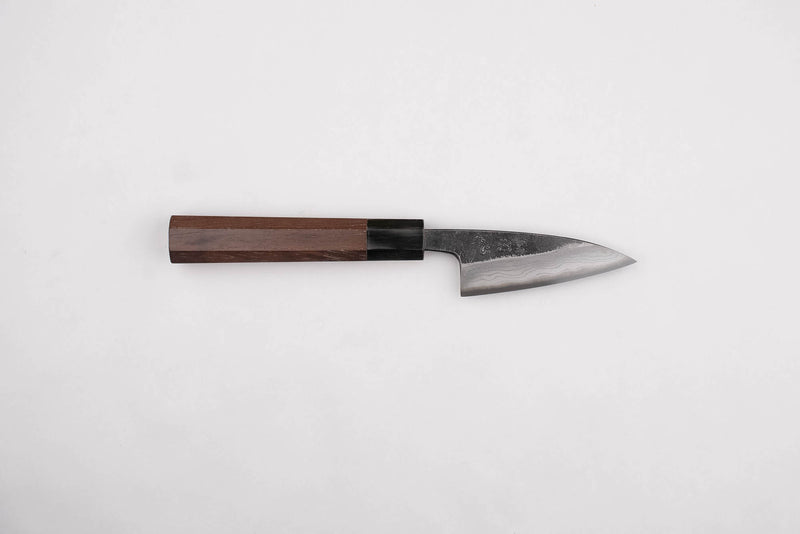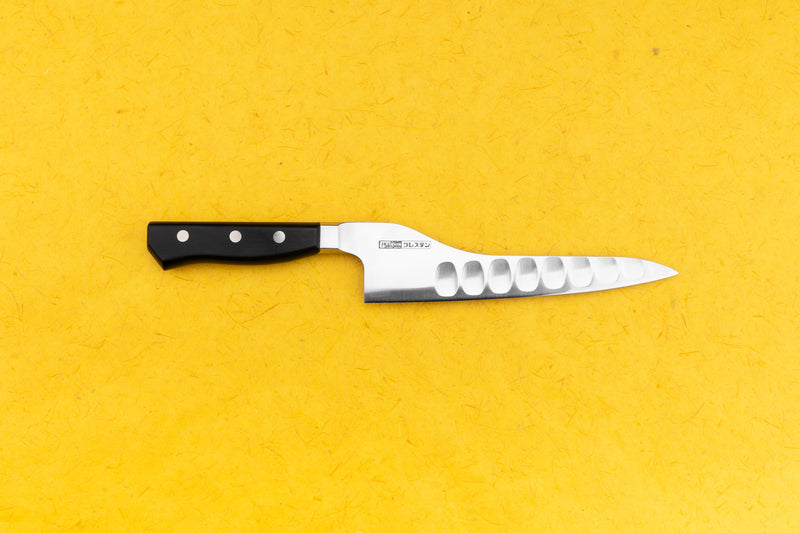What's a Petty Knife, and Why do I Need One?
If you asked me what’s the one knife every cook needs, I would say that a gyuto is the one knife to rule them all. I would then make a strong case for picking up a second knife: a petty. “Petty,” a word borrowed by the Japanese from the French word “petit”(meaning “small”), made its very roundabout way into the English language to describe a small knife. A petty knife is a perfect complement to a gyuto—where your gyuto is big enough to take down a big squash and make clean slices of meat, its size can make it cumbersome when it comes to detailed tasks. Think cutting the top out of a tomato, trimming meat, or cutting up small fruits and veggies like strawberries or shallots. Petty knives can handle these tasks with ease.
Petty knives are also great gifts. Even if someone’s invested in a good chef’s knife, they may have overlooked how much a game-changer a good small knife is in the kitchen, and the most seasoned knife nerds can always justify a new petty. Being a little smaller, pettys are often a little kinder to your wallet, too, so you can scratch that new knife itch without breaking the bank.
 Petty knives are perfect for handling those small jobs that big knives can't do easily.
Petty knives are perfect for handling those small jobs that big knives can't do easily.
Which petty knife should I get?
When you’re shopping for a petty, something to think about is what size you think you’d like to use. Sure, all petties are small, but there are a lot of different lengths to choose from:
- 75mm-100mm: these guys are as small as they come. A petty like this, also called a paring knife, is best suited for—you guessed it—paring! This blade size is easily manageable if you like to peel or cut vegetables in your hand instead of on a cutting board.
- 120mm-135mm is the Goldilocks size. It can do a little paring, and it can cut up fruit and veggies on the cutting board no problem. It can even be used carefully to break down a chicken or trim larger pieces of meat.
- 150mm is the carnivore’s petty. Many butchery knives (honesuki, cleavers) are built a lot thicker so they can handle the tough job of going through joints, or in some cases, bones. The drawback is that they might not cut as finely as you like. Enter the 150mm petty! Its slender shape makes it the best knife to trim fat and silver skin, and it can take the place of a honesuki or boning knife if you like to keep a minimalist knife kit.
 A larger petty knife is perfect for handling smaller jobs on your cutting board.
A larger petty knife is perfect for handling smaller jobs on your cutting board.
When picking out a petty, I’ve noticed many people see it as an opportunity to try out a different look, steel type, or handle style than they’re used to. Since pettys don’t see as much heavy use as a gyuto, you don’t need to worry about it feeling perfect right away. You might experiment with a Japanese handle if all you’ve ever used is Western-style, or break out of your stainless steel comfort zone and try a carbon steel knife.






